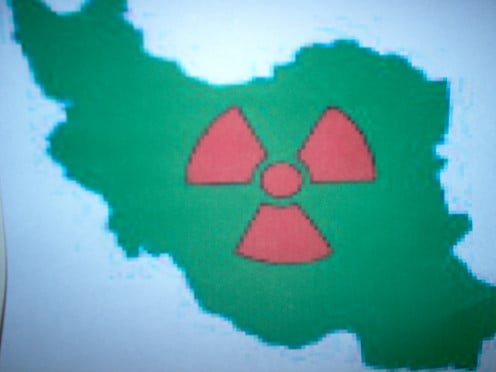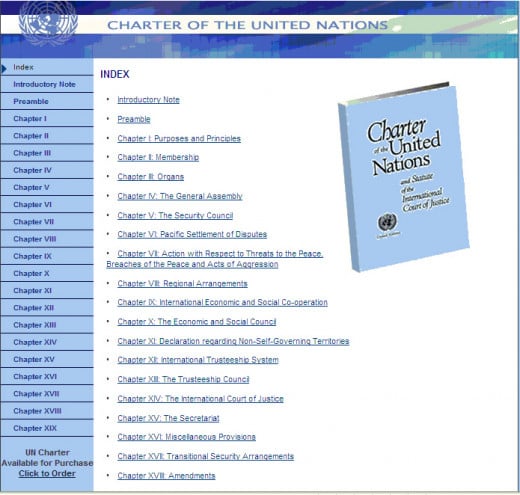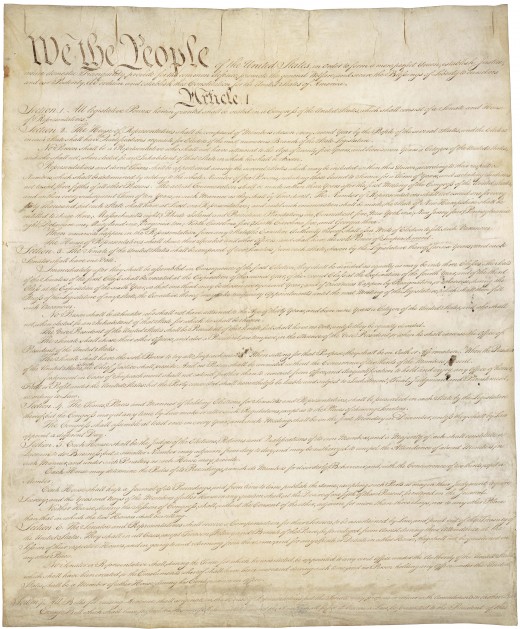Should We Anticipate Revolution By Treaty?
Prologue: Nuclear Treaty? - 2015
In 2015, The United States negotiated a deal with Iran with respect to how Iran could move forward with the development of its nuclear capability. Iran indicated that they seek to provide a source of electrical power for their country. The United States and other countries of the world suspect that the true goal of Iran was to develop nuclear weapons so that they can establish a greater military power.
Without going into details, the agreement was contentious.
In this article, we discuss the Constitutional process for making treaties as indicated in the clause regarding Presidential authority with respect to treaties. That clause say says: “He shall have Power, by and with the Advice and Consent of the Senate, to make Treaties, provided two thirds of the Senators present concur; …”
Shortly after the negotiation announcement, there was much discussion about how the United States would go about entering into the agreement. The concern was that the agreement was not being instituted under the Constitutional treaty process. The discussion indicated that, instead, the Senate was seeking to take action to reject the agreement. Those who opposed the agreement felt they had a majority in the Senate. But, supporters of the agreement were claiming there were enough votes in the Senate to avoid overturning a Presidential veto of that rejection.
This represents a fundamental change in the power flow of our government. The new process is an assumption of power and authority by the President when entering into agreements with foreign nations, unless two-thirds of the Senate register an objection. Instead of the collected States agreeing that this is best for the United States, and that agreement being declared through States representatives in the Senate, we have a new situation where those same States are subjugated to the current federal will, unless two thirds of the Senate object. The States have no say. The fundamental change in the power flow of our government is that we now elect rulers, not representatives.
So, somebody please help me to understand, is this being called an agreement rather than a treaty simply as a procedure to avoid having to go through the normal constitutional process for ratifying a treaty?

The Art Of The Deal
The United States withdrew from the deal on May 8, 2018.
Revolution By Treaty
Background: The Film “Revolution By Treaty”
Filmed in 1993 and produced by the John Birch Society, the film “Revolution by Treaty” describes how the power granted by the people to our elected President and Senate might be used to change or override laws made by the Federal or State governments, or to override the freedoms guaranteed for us in our United States Constitution. The film presents a review of applicable parts of the Constitution, both as worded in the Constitution, and as intended by our forefathers. It then discusses those parts of the Constitution relevant to United Nations actions and current events that had taken place near the time of the action. The film seeks to share a concern that a dedicated group of politicians might achieve control of the Presidency and Senate and then use their interpretation of the authority of these positions to put the authority of the United Nations law above the authority of our own United States Constitution. The process would involve signing treaties with the United Nations.
NOTE: The link in this article is to a discussion regarding revolution by treaty.
United Nations

The Hierarchy of Authority
The film also discusses the differences in the hierarchy of authority as indicated by our forefathers in the Declaration of Independence, and as indicated in the United Nations “Covenant on Civil and Political Rights”.
For example, The Declaration of Independence makes clear our forefather's perspective on the flow of authority that grants rights with the phrase:
We hold these truths to be self-evident, that all men are created equal, that they are endowed by their Creator with certain unalienable Rights, that among these are Life, Liberty and the pursuit of Happiness.--That to secure these rights, Governments are instituted among Men, deriving their just powers from the consent of the governed
By contrast, the film cites an example from the United Nations “Covenant on Civil and Political Rights” that describes implied authority that flows from the Government to the people. It is the films claim that the United Nations does not include God in their discussion of rights. Quite simply, “We the People” were the power that granted the authority to form a United States government. By contrast, the United Nations government is the power granting authority for individual’s freedoms.
Film Conclusions and Recommendations
The film offers the following Conclusions:
- The founding fathers explicitly condemned the notion that treaty law could supersede the Constitution.
- It is a gross misreading of the Constitution – deliberate or otherwise – to hold that treaty law supersedes the Constitution and can be held supreme.
- The UN Covenant on Civil and Political Rights amounts to a fundamental denial of the American system.
- The purpose of tying our nation to a series of UN treaties is to have us become totally dominated by the UN, in the manner that Australia is already finding herself dominated.
The film offers the following Recommendations:
- We must educate fellow citizens about the plans of those who would use treaty law to destroy national independence and bring us into the new world order.
- Senators must be placed on notice by the people that no treaty should be ratified without a quorum defined as a majority, and no treaty can supersede the Constitution.
- Many treaties already ratified must be cancelled.
- The United States must withdraw from the United Nations.

Do Senators Represent State or Party or What?
Do We have a Partisan Senate?
Relevant Sections of the United States Constitution
The United States Constitution makes mention of treaties in several places, and addresses basic questions regarding who is involved, the consequences of a treaty, and the process to be used within our system. It discusses the actions to propose, approve, and terminate treaties. These are summarized below.
Who proposes treaties, and who approves treaties?
Article II, Section 2, paragraph 2 indicates the President has the power to make treaties and the process required for making treaties. The exact phrase is “He shall have Power, by and with the Advice and Consent of the Senate, to make Treaties, provided two thirds of the Senators present concur”. The thing to note here is that neither the House of Representatives, nor the individual States have a say in whether the United States enters into a treaty. It is solely a power of the President and the Senate.
At the time the Constitution was passed, the presumption was that Senators would represent for their States legislatures. This has since changed. Our Supreme Court has upheld decisions passed by the Senate when a majority of States had sued to overturn that same law. This act sets a precedent.
What are the consequences of treaties to United States law?
Article VI, Paragraph 2 states:
This Constitution, and the Laws of the United States which shall be made in Pursuance thereof; and all Treaties made, or which shall be made, under the Authority of the United States, shall be the supreme Law of the Land; and the Judges in every State shall be bound thereby, any Thing in the Constitution or Laws of any State to the Contrary notwithstanding.
If you viewed the film, you have seen the discussion on this section of Constitution, and are aware of the consequences of how the wording might be interpreted if a subgroup within Congress sought to change United States Law through treaty. Briefly, their concern is that ratification of a treaty could be used as a tactic to bypass the normal process for creation of laws through the full Congressional process. Ultimately, that interpretation would likely be clarified through Constitutional Challenge through our Supreme Court.
What is needed to approve treaties?
Article I, Section 5, paragraph 1 indicates requirements for conducting business using the phrase:
Each House shall be the Judge of the Elections, Returns and Qualifications of its own Members, and a Majority of each shall constitute a Quorum to do Business.
So, all that is needed is for a majority of Senators to actually participate in the “two-thirds of those present” to conduct the business of reaching a Treaty decision. The number breakdown is this: Fifty-one Senators for the quorum needed, then thirty-four Senators would be needed to be the majority of that much smaller quorum.
What is needed to negate an approved treaty?
1) Presidential Authority – An example is President Carter revoking the United States treaty with the Republic of China in 1979.
2) Two-thirds of the Senate.
3) Constitutional Challenge – the long involved process of creating a hearing before the Supreme Court.
References
- Transcript of the Constitution of the United States - Official Text
The United States Governments National Archives makes transcripts of our founding documents available on the Internet. - The John Birch Society
The video in this article was created by the John Birch Society. This group provides Americans with the educational materials, programs, campaigns, and organizational leadership to restore our constitutional Republic. - Charter of the United Nations
The Charter of the United Nations was signed on 26 June 1945, in San Francisco, at the conclusion of the United Nations Conference on International Organization, and came into force on 24 October 1945. This link is to the index for the charter.
Implications of the 2012 Election Results
I was confused by the 2012 election results, but probably not for the same reason most people were confused. The election showed majority of State governors and majority of House representatives to be from one party, while the majority of Senators elected were from another party. What I found confusing was why the people of our nation would vote for State governors and House Representative to be from one party, while at the same time voting for Senators and President to be from another party. So I asked myself, what powers are held by the Senate and President, but not shared with the House and States? The most obvious answer is that the Senate and the President hold the power to make treaties.
2013 UPDATE: IRS Influences on the 2012 Election?
In spring of 2013, a scandal unfolded within the Internal Revenue Service. The IRS is the tax-collection authority for the United States Government. They hold so much power that many people actually fear them.
Our Congress had passed laws that give tax relief to supporters of groups that collect donations to support non-partisan political efforts. Groups that want to be eligible for this sort of tax-relief have to apply for special status with the IRS. In simple terms, the government offers a carrot to those who seek to voice non-partisan opinions. No problem, except for one little thing.
The folks at IRS who approve those applications had their own idea of who could be non-partisan. They had follow-up questions about applications from those organizations they disagreed with. These questions delayed approval of those voices getting a tax break for speaking. In simple terms, they put the carrot on a stick, and dangled it front of those they disagreed with, and delayed and distracted them from speaking their voice.
Many believe that this idea originated in White House. Many believe it stifled voices during the 2012 elections.
Open questions of relevance to this article are: What Groups in what States were inhibited from having their voice heard? What 2012 elected Senators benefited by having voices stifled?
The Power of a Partisan Senate
In our traditional way of thinking about our government, the fact that the President and the Senate have sole authority over the ability to make treaties would not be a concern. In our traditional view, the purpose of the Senate was to represent for our States legislatures.
That old way of thinking has been replaced by a new and more modern way of thinking. Senators represent for their party. The States they nominally represent have no say in what they do. The 2010 example of this was the 2010 Health Care law, which has been upheld by our Supreme Court despite having a majority of States joined in suit to overturn the law. In addition, the method by which the Health Care law was passed has been re-affirmed through popular election by re-electing Senators who voted against their States. Both the Supreme Court and the People have told the Senators, go ahead and do what you want, we won’t object, and the States have no say.
It has become apparent that what we were taught as children about how the government works has been replaced by a new method. We are still at the beginning of understanding the impact of a Senate that does not represent for the States.
And so I ask, should we anticipate "Revolution By Treaty"?








